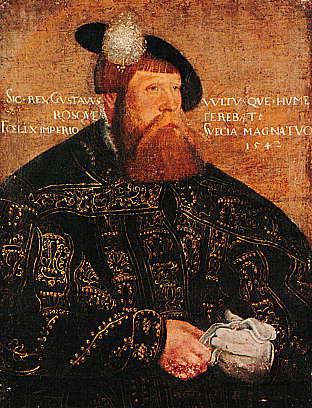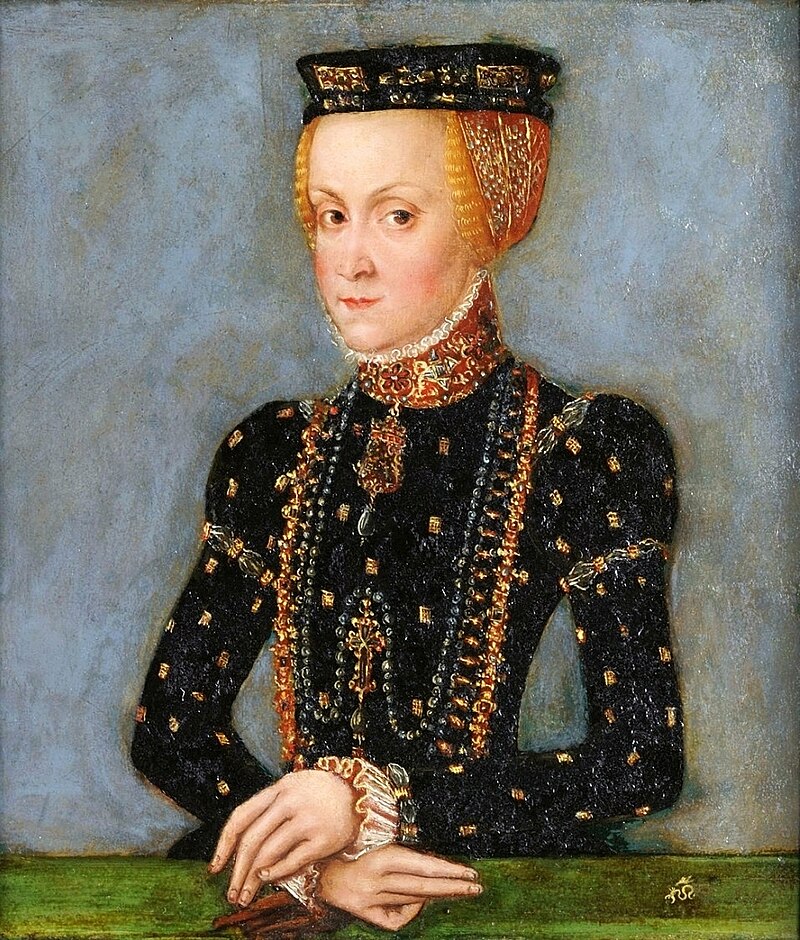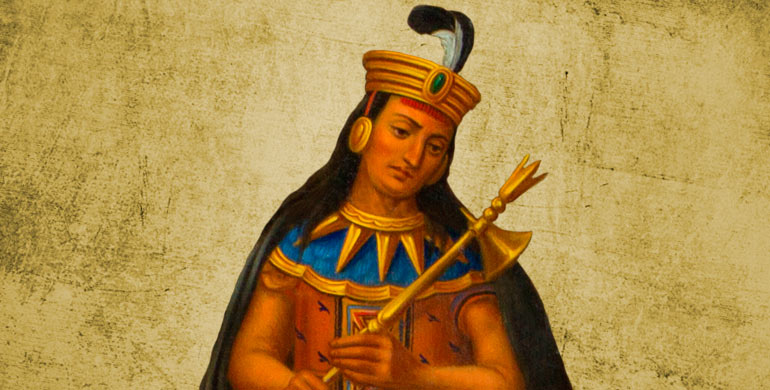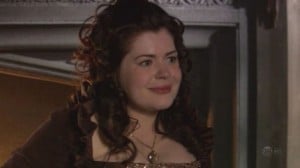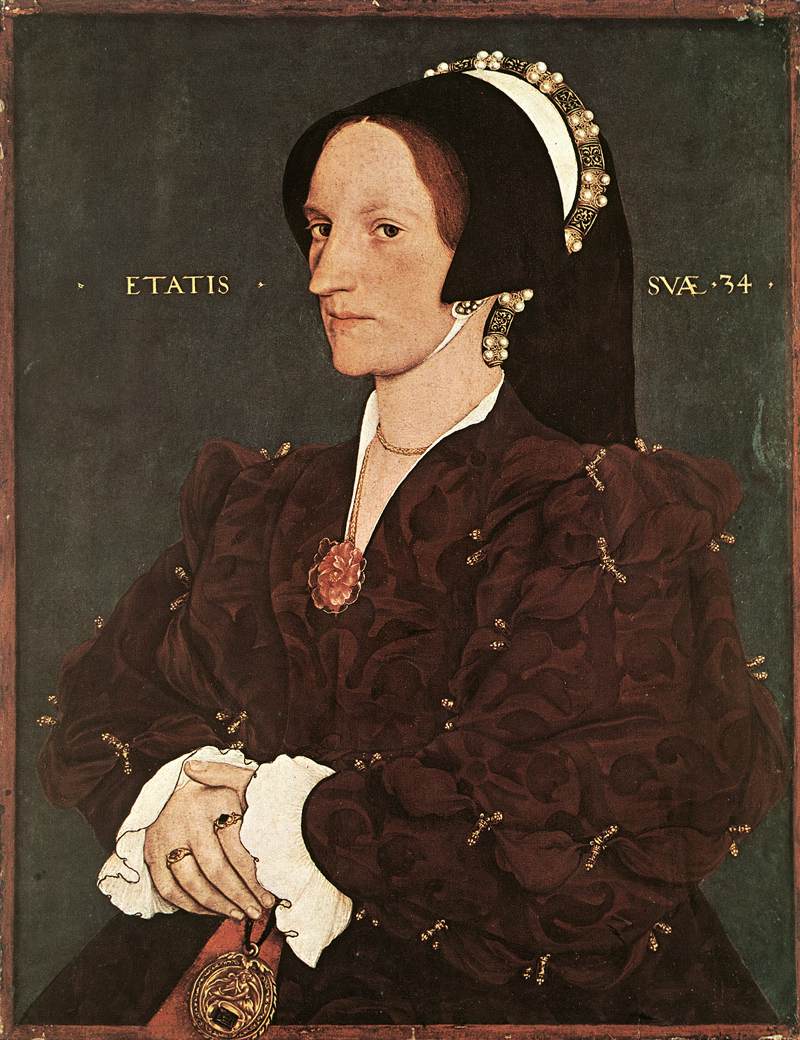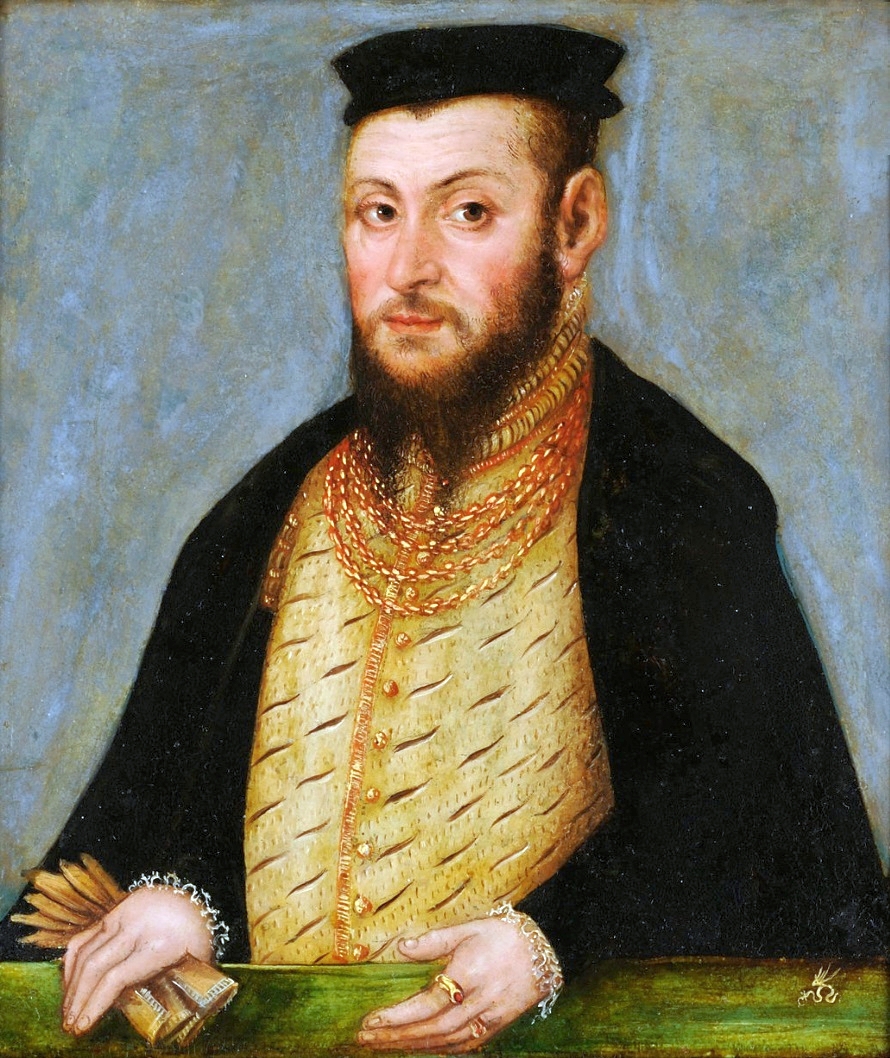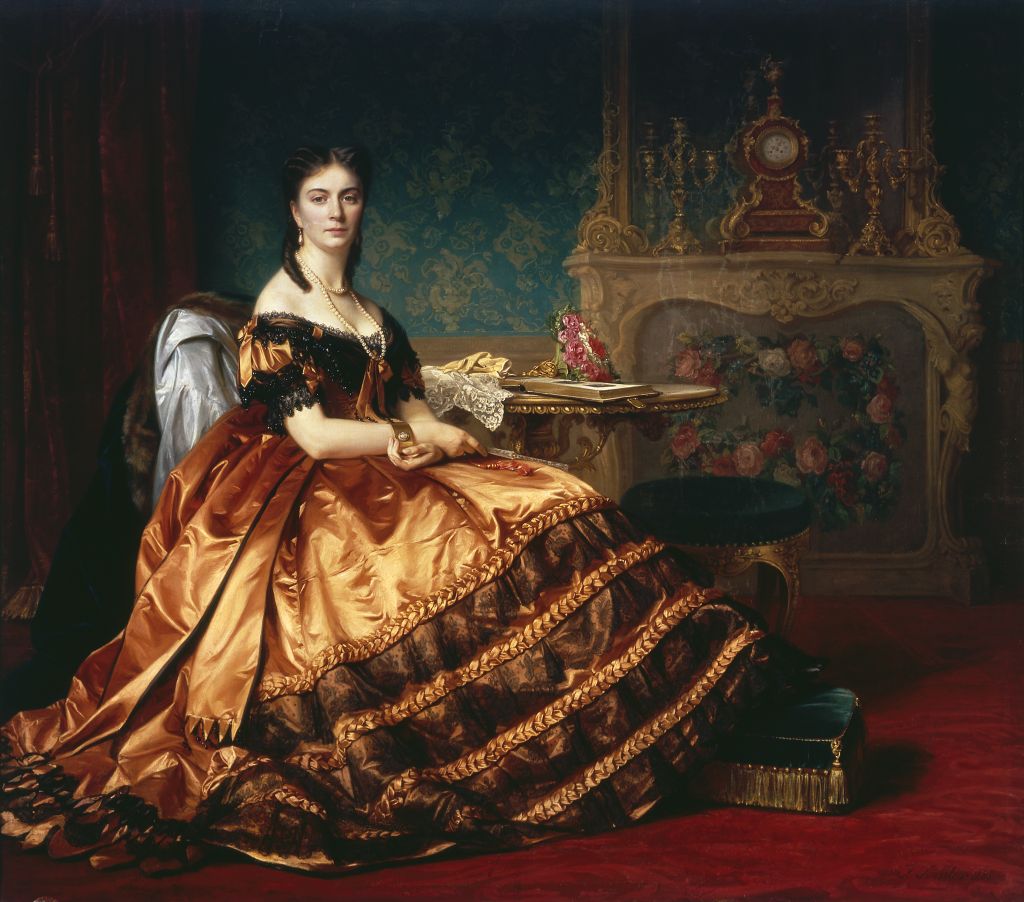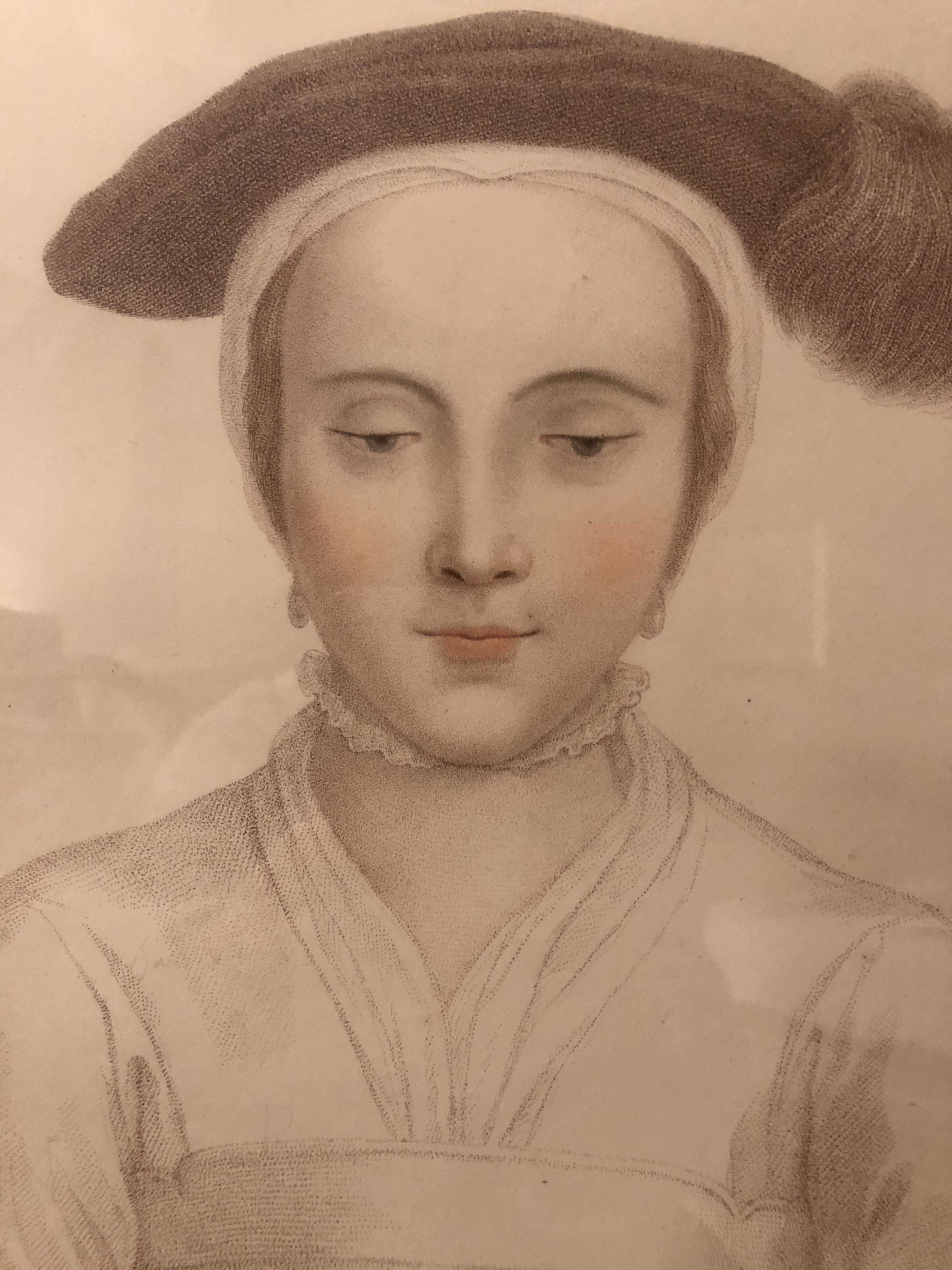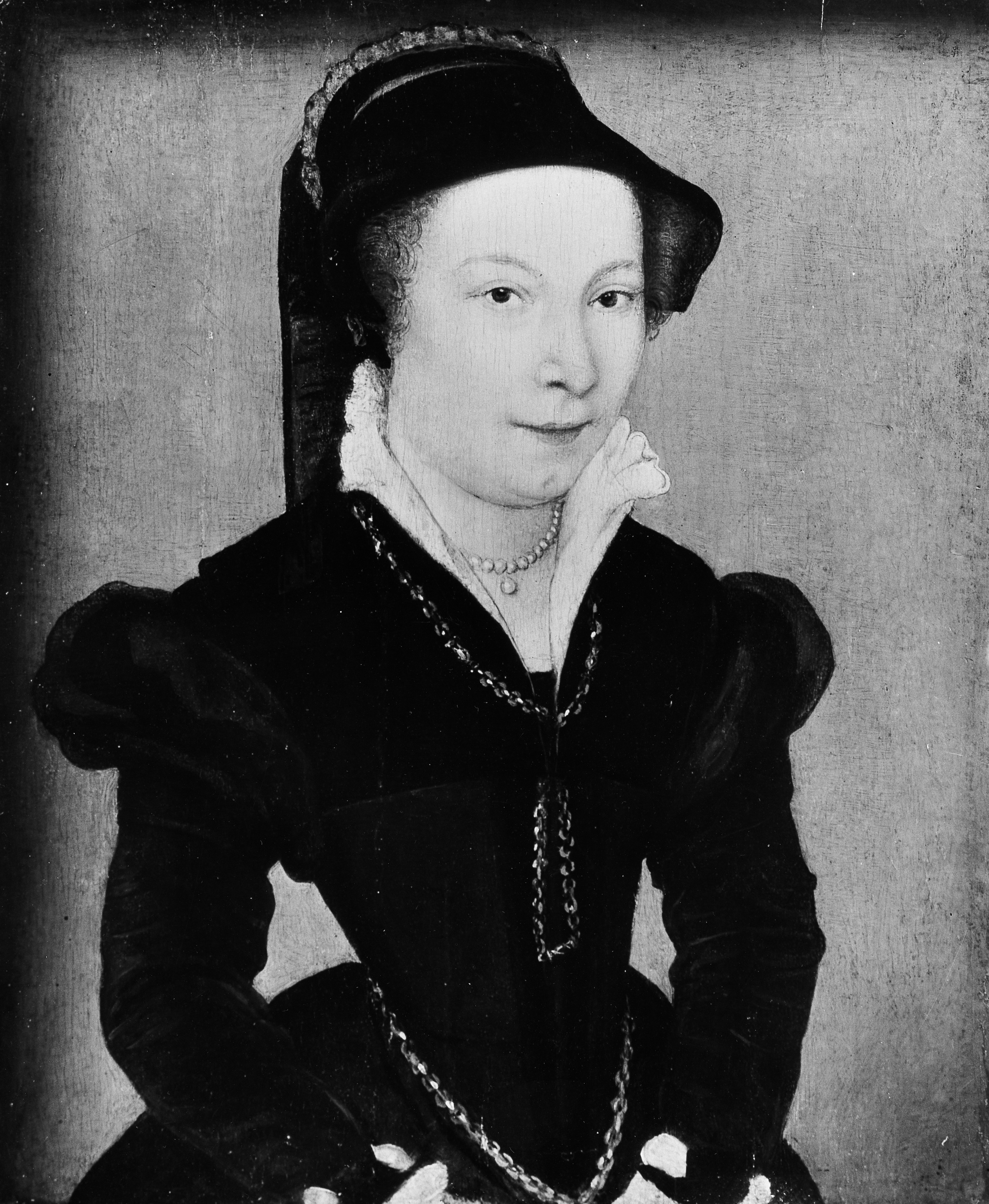As winter continued, on January 27th, Charles of Austria, and his wife, Anne of Bohemia and Hungary had their fourth child and second son, who they named Maximillian after his late grandfather. Also, in Cadiz, on February 1st just before the arrival of King Ferdinand VI’s army the Duchess of Cadiz, Infanta Magdalena of Navarre had a second son with her husband, who she and Juan Carlos named Pedro, after her granduncle, Pierre of Foix. The King of Spain for his part, rode at the head of an invasion force totaling 40,000 men, with the immediate plan being to cross the straits of Gibraltar, and seize Ceuta, which was to be followed by half of the force attacking Teoutan. Before he could launch his proper invasion of Wattassid Morocco Ferdinand had to undertake some of the more mundane matters of leading his realm to war. Firstly, he would need to appoint regents to govern Spain in his absence. For this role, he decided to have three of his most capable family members serve as coregents(his father’s regency in Aragon highlighted that multiple regents could be more effective than one). His first appointment as regent was a natural one, his mother Margaret of Austria, who had served well as regent during the Second Italian War, and possessed great political acumen. The second regent that he chose was the elder of his two brothers, Juan Carlos, Duke of Cadiz, who despite his cool relationship with his wife, proved to be a competent administrator of Cadiz. The third person he chose to be coregent was his third sister, Urraca, Duchess of Alba, who, had thoroughly recovered from her delivery of her eldest child Fadrique in January. The last choice was mostly motivated by the fact that her husband was to accompany Ferdinand on campaign, as well as the fact that of all of his sisters, Urraca possessed the greatest political acumen. As for his commanders, Ferdinand would delegate power to three men to serve as sub-commanders. The first that he choose was the widowed Luis Fernández de Córdoba, the Duke of Sessa, who had served well during the Third Italian War, and as a second cousin and son-in-law to the famed Gran Capitan provided a morale boost to the men. His second choice was a rather predictable one, his younger brother, the Infante Jaime, Count of Urgell who had received a thorough education on matters of war. His third major commander was to be his brother-in-law Fernando Álvarez de Toledo, who was in possession of great tactical acumen, and had a bone to pick the Moroccans as his father was killed during a raid by Barbary pirates when he was just three years old. As for his wife and children, Ferdinand would have them stay with his sister-in-law at Cadiz, so that he could easily see them during the campaign, yet he would not risk the lives of his wife and young children by bringing them on campaign in North Africa. Another measure that Ferdinand would take before leaving Spain, was the hiring of a Jewish Financier Samuel Abravanel(whose younger brother Abraham was enslaved by Barbary Pirates), to manage the army’s logistics, and his nephew, one Isaac Abravanel was also hired as a military engineer. Soon enough, on March 9th, Ferdinand and his army landed at Ceuta, and easily crushed it’s modest garrison, and then allowed limited looting(though the city’s inhabitants were mostly spared from violence, a result of Ferdinand’s pragmatism) Meanwhile, a Portuguese force of 14,000 men led by King Miguel I of Portugal and his young brother-in-law Teodósio I, Duke of Braganza landed at Tangier, took the city and put it’s garrison and ruling class to the sword. This different approach in regards to the handling of conquered lands in North African was mostly the result of the different personalities of the two kings, for while they were cousins, and married to a pair of sisters they had vastly different views on religion. Miguel, having been raised under the direction of his exceptionally pious parents(he left his mother Isabella of Aragon as Regent in his absence), viewed this war as an extension of the Reconquista, and as such wanted his men to completely dominate the local people(though he granted clemency to Jews, provided that they pay a hefty head tax). Ferdinand for his part, while no skeptic, was not particularly devout, and mostly left the Muslims and Jews alone, provided that they pay the property tax that ensured their protection, something driven by Ferdinand’s pragmatism, as such taxes provided another source of income for the Spanish crown. In stark contrast to his cousin, King Ferdinand VI simply viewed the war as a way to earn glory on the battlefield, and an opportunity to curb Barbary piracy. Still, regardless of their different motivations, the two kings soon prepared to advance further into Watassid Morocco, Miguel and Ferdinand both began to advance south, towards Larache and Tétouan respectively. The Portuguese for their part were able to take Larache with little bloodshed on May 7th, for King Miguel, capitalizing on the tales regarding the treatment of Tangier, gave the town’s leaders an ultimatum: They were to surrender and give supplies to his men or their town would be sacked. The town’s leaders, knowing that the Sultan, Abu al-Abbas Ahmad, and his army were in Fez naturally chose the former, and the town’s citizenry was mostly unmolested. Meanwhile, on May 24th, after a two-week siege, the Spanish army was able to take Tétouan in a hard-fought assault, loosing 500 men in the process. Finally, after a month without much of a proper response, on June 25h the Spanish and Moroccan armies met on the field of battle at the hills around the Kasbah of Chefchaouen, where 50,000 Moroccans, lead by their young Sultan Abu al-Abbas Ahmad , faced 30,000 Spaniards. One popular anecdote in Spain is that right before the battle, as a young page asked if he would retreat in the face of a larger army, King Ferdinand VI smacked the young man and asked,”Could you call yourself a man to be scared by such rabble? No, we will not be the ones that retreat on this day.” This flamboyant attitude, and the later events of that day, would see the Spanish king earn the sobriquet Ferdinand VI “The Bold” of Spain, a stark contrast to his late father’s sobriquet, “The Good”. As the battle began, it became apparent that despite their zeal, ferocity and numbers, the Moroccans were not meant to wage the same sort of war the Spaniards were, and when the Infante Jaime, lead the Spanish Knights against the Moroccan heavy cavalry, the Moroccan cavalry, after minutes of fighting fled the field. Meanwhile, at the rest of the line, the Moroccans found it all but impossible to penetrate the Spanish Tercio formations and faced withering fire from the Spanish Arqubusiers. What ultimately broke the Moroccan resolve, however, was a charge upon their flanks by Spanish knights lead by not only the Infante Jaime, but also King Ferdinand VI himself, who was credited with personally killing seven Moroccan infantrymen. At the end of the bloody day, 8,000 Spanish troops were killed, whereas a total of 20,000 Moroccans were killed, and another 8,000 were captured, effectively orbiting the Moroccan army. Sultan Abu al-Abbas Ahmad, for his part, was killed in a protracted mounted duel with the Infante Jaime, who killed his opponent by somehow managing to pierce the Sultan’s gorget, leaving the man choking to death on his own blood. Almost immediately after the victory, the King elevated his brother’s title to the dignity of Duke of Urgell, while Luis Fernández de Córdoba, for his expert placement of the Arqubusiers would be made Viceroy of Castile after the wars end. The Duke of Alba, Fernando Álvarez de Toledo, who played a key role in organizing the Tercios would be rewarded with the prestigious office of Mayordomo Mayor, a role in managing the King’s household. While the battle did not cause an immediate surrender, it would be the nail in the coffin of Watassid rule in Morocco, and would become a catalyst for the rise of the Saadi dynasty. Almost immediately after the battle, on July 2nd, the patriarch of the Saadi family, and the Prince of Tagmadert, Mohammed ash-Sheikh, perhaps predicting the Watassid defeat, marched at the head of a 20,000 strong army on Fez, with the intent of declaring himself Sultan of Morroco(The Watassids were now extinct in the male line, as Sultan Ahmad was childless), and of making peace with the Spanish and Portuguese. After a brief week long siege, in which the defenders of the city received word of the Watassid Sultan’s death, the city surrendered, and Mohammed ash-Sheikh was proclaimed as Sultan Mohammed I of Morocco on July 16th. The Sultan for his part, realizing that continuing the war would be an exercise in futility, would sign the Treaty of Fez on August 4th. This treaty granted the Portuguese all the Moroccan coastline to the South and West of Tangier, save for Agadir, with a small pale of inland hinterland. The Spanish for their part were to receive all of the Moroccan Coastline east of Tangier, and they too were to receive a pale of hinterland. For the Spanish and Portuguese, the treaty was a great success, for it not only gave them control of several valuable ports, but it had also made any future raids by Barbary Pirates inconvenient, and meant that the Spanish Navy could focus it’s attentions on raids coming from Algiers and Tunisia. Also, two months later in Portugal, in October, King Miguel’s wife, Catherine of England, revealed that she was pregnant for the fourth time, and many of the Portuguese prayed that she would deliver a male heir in the next year.
Another war between cross and crescent would take place in Hungary as well, though some would argue that this conflict would be of far more epic proportions regarding its potential consequences. The Ottomans, under Sultan Suleiman I of the Ottoman Empire, soon began to penetrate the Hungarian frontier by June, the 55,000 strong army reached the Danube, with the intent of pillaging the Hungarian countryside. Soon enough, the Hungarian King, Louis I of Hungary, called upon the realm’s nobility to provide troops for the realm’s defense, and after receiving reports from Christian spies within the Ottoman army of the Turks intent, directed the bulk of his forces towards Buda, in an effort to protect Central Hungary from the Turk. Louis also had ample reason to fight, his wife, Mary of Austria, Queen of Hungary, was heavily pregnant, and could not be safely moved should he be defeated. Crucially for the Hungarians, they were also to receive some outside help. Firstly, was a contingent of 8,000 Polish troops, sent by King Sigismund I of Poland(having welcomed the birth of his third child Princess Sophia, three months beforehand), who was tied to Louis as his uncle, as well as through the fact that he was the Queen of Hungary’s brother-in-law through his marriage to Eleanor of Austria. Another source of assistance came from King Louis’s father-in-law, Phillip I, Holy Roman Emperor, who provided 4,000 men to drive off the Turks, partially out of a genuine wish to help his son-in-law and daughter, but also out of the knowledge that the Turks could use Hungary as a springboard to attack Austria, or his second son’s lands in Istria. Another form of assistance was a slightly surprising one, for Duke Massimiliano I of Milan, spurred on by his own piety, and the exhortations of his wife Isabella of Aragon to beat back the infidel(in the mold of her grandmother and namesake) arrived in Hungary at the head of a 3,000 strong army in July. Soon enough, on August 29th, the Hungarians, and their allies, now totaling 45,000 men, with 100 cannons, attacked the exhausted Ottoman army outside the town of Mohács. While he made the decision to attack at this point, a Hungarian knight protested that this was unchivalrous, to which King Louis bitterly laughed,”Did the Turk show chivalry to Belgrade, or all of the towns that they have just pillaged? No, I think it time that they be given the same treatment that they mete out to the innocent.” The battle soon began at mid-morning, and the butchery would not end until the sun had set. The initial charge by the Hungarians, with their cavalry advantage, went swimmingly well, and much of the Ottoman irregular forces, and cavalry was either routed or killed. The battle became significantly more difficult for the Hungarians when they started fighting the Ottoman Janissaries and professional troops, yet with the fervor of men fighting for their kingdom and their god, they fought on. The Hungarian Cavalry, with their Ottoman counterparts now absent, could now play a decisive role in the battle. They, alongside their Polish comrades, concentrated on attacking the Ottoman Artillery, forcing the enemy infantry to pull back to protect the artillery, and in a tighter formation, they were very vulnerable to the Hungarian cannon.; After a volley of artillery, the Hungarians charged upon the remaining Ottomans, whose artillery advantage was now nullified, for their cannon could not fire without hitting their own men, and had to contend with near-constant flank attacks by Hungarian cavalry. Ultimately, the crucial moment of the battle came when Sultan Suleiman collapsed after he was shot in the hip, by an arquebusier, and his men thinking him dead, attempted to flee the field. As the Ottomans attempted to flee, however, many were killed, or captured by the Hungarian Knights, driving the Ottoman death toll even higher, while Sultan Suleiman was captured, though he would recover from his wounds. In spite of the fact that this was a victory for the Hungarians it was a very costly one, an estimated 12,000 Hungarians and their allies were killed, or badly wounded, and even some prominent noblemen died, such as John Zápolya and his younger brother George Zápolya, both shot dead by Janissaries. Ottoman casualties were even worse than those of their enemies, an estimated 20,000 Ottoman troops were killed, and another 10,000(mostly Rumelian levies) were captured. As for their leadership, the Grand Vizier, Ibrahim Pasha was trampled underfoot by a Polish Knight, Malkoçoğlu Balı Bey, killed by a Milanese arquebusier and the Crimean Khan, Devlet I Giray, was badly wounded by Hungarian footmen. Soon after the battle the Treaty of Buda was signed, in which the Sultan was released in return for an annual indemnity equal to 5,000 Akçe a year for ten years, as well as a truce preventing the mutual aggression for ten years. Territoriality, The Ottomans were to give Belgrade, and all lands north of the city to King Louis II. Overall, while this wasn’t exactly a devastating defeat for the Ottomans, it was a humbling one, which would cause Sultan Suleiman “The Magnficient” to focus on the internal stability of his Empire, and in fighting his Persian rivals, the Safavids. On September 7th, upon his return to Hungarian court he found that his wife Mary, had just given birth the day before, to a daughter, who she named Catherine, after St. Catherine of Siena, upon whom she prayed for her husband’s survival and victory. Louis, though a little disappointed that the child was a girl, saw the successful delivery as a good omen for his realm, and showed his wife much gratitude.
Also, in early August, Frederick of Austria, the penultimate child of Phillip I, Holy Roman Emperor, and Juana of Aragon, was wed to Barbara Fugger the daughter of the incredibly wealthy Raymund Fugger, in a marriage intended to repay the Fugger family for funding Phillip’s election as Holy Roam Emperor. While the marriage was simply designed as a way of repaying debts, it soon blossomed into passionate love, for Frederick, like his mother, expressed a nearly excessive devotion to his spouse, and Barbara, unlike her father-in-law, returned that love fully.
In Italy meanwhile, on August 22nd, a glittering marriage took place in Florence, befitting the groom’s wealth, and the bride’s status. The groom was the young Duke Alessandro I of Florence, who was determined to overcome the stain of his bastardry by marrying Louise of Savoy, the youngest of Duke Philibert II of Savoy’s two daughters by Maria of Aragon. The two seemed to like each other well enough, though Louise would later come to regret her expectation that he would be discreet when it came to extramarital affairs, and he would take multiple mistresses throughout their marriage. Still, Louise was determined that she would not be conniving like her mother, and instead of trying to replace her husband’s mistress with pliable women, she simply ignored them. Another show of Louise’s indifference towards the unfaithfulness of powerful men, was the fact that she was accompanied to Milan by her bastard half-sister Agnes of Savoy, who would go on to serve as her chief lady in waiting for several years. In Milan, Louise’s cousin, Isabella of Aragon, Duchess of Milan, and her husband Duke Massimiliano I of Milan welcomed the birth of another child on August 23rd, a boy who they named Giovanni, the Italian variant of her late father’s name. Unfortunately, the sickly child, was born two months early, and would die just two days later, on August 25th. The saddened couple would soon receive some better news, when several days later it was agreed that Sigismund, the Crown Prince of Poland, would be wed to their eldest daughter, Bianca Maria Sforza, shortly after the boy’s sixteenth birthday.
In The Holy Roman Empire, Emperor Phillip I was finally, after months of negotiation, able to meet with the Empire’s many princes at Speyer, on September 3rd, for an imperial diet regarding the spread of Lutheranism, as well as the fate of the man who had heavily criticized the Catholic Church, Martin Luther. Ultimately, in spite of the protests of his son, Charles of Austria and more hardline Catholics Phillip reached a compromise, peaceful Lutherans were to be tolerated in areas ruled by Catholic Princes, while peaceful Catholics were to be tolerated in lands ruled by the Protestant Princes, while Catholicism was to remain the Empire’s official religion, and Church lands could only be taken by being purchased from Rome.
In Sweden, a dispute over the expulsion of Archbishop Gustav Troll, by King Gustav I prompted the beginning of the Swedish Reformation, though h unlike it’s Norwegian Counterpart, the Swedish Church would retain nearly every piece of Catholic Doctrine, except for three main difference. First and foremost was that the King of Sweden was the head of the Swedish Church, and seized half of the Church’s land in Sweden for the crown. Secondly, the bible was to be translated to Swedish and Finnish, the main vernacular languages of Sweden, to prevent priests from manipulating the people into believing things that only benefitted the clergy. Thirdly, while Communion was still a central part of worship, it was stressed that the bread and wine were mere symbols of the blood and body of Christ. This relatively moderate reformation was also done for dynastic reasons, as Gustav scaled back on more radical reforms to keep his betrothal with Princess Hedwig of Poland.
In England, King Henry VIII arranged marriages for his two youngest daughters, Princess Elizabeth, and Princess Edith. Princess Elizabeth was to be betrothed to her second cousin, Philibert of Savoy, the eldest son of Phillip of Savoy and Susanna of Bavaria, who stood to inherit Savoy after his grandfather (the current Duke) and his father. Princess Edith for her part was betrothed to her first cousin once removed, Crown Prince John of Denmark, reaffirming ties between England and Denmark.
Towards the end of the year, a crucial marriage binding the d’Este and Habsburg families soon took place, on December 26th, with Ercole d’Este, the son and heir of Duke Alfonso I of Ferrara being wed to Catherine of Austria, the youngest daughter of the Holy Roman Emperor. Many remarked that the two were remarkable well suited to one another, as they both shared a keen interest in their religious studies, and much like their cousins, the Duke and Duchess of Milan, the two came to love each other through their shared interests.
Teodósio I, Duke of Braganza
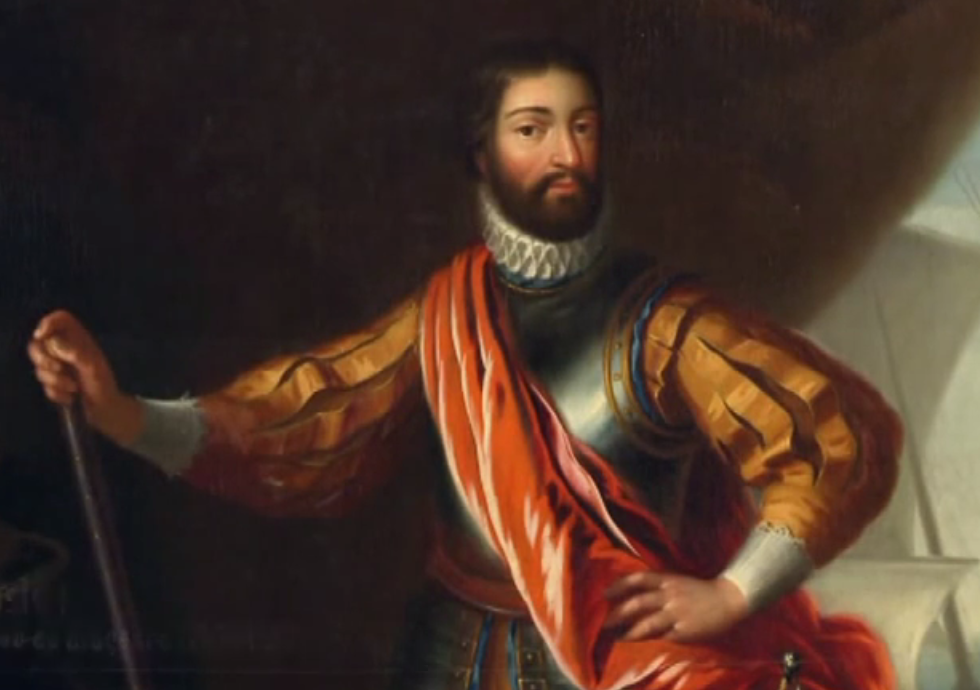
Infanta Beatrice, Duchess of Braganza

Sultan Suleiman "The Magnificent" of The Ottoman Empire
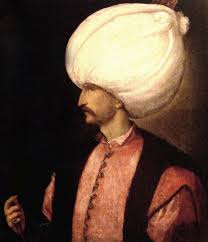
Duke Alessandro I of Florence

Louise of Savoy, Duchess of Florence

Agnes of Savoy

Ercole d'Este

Catherine of Austria
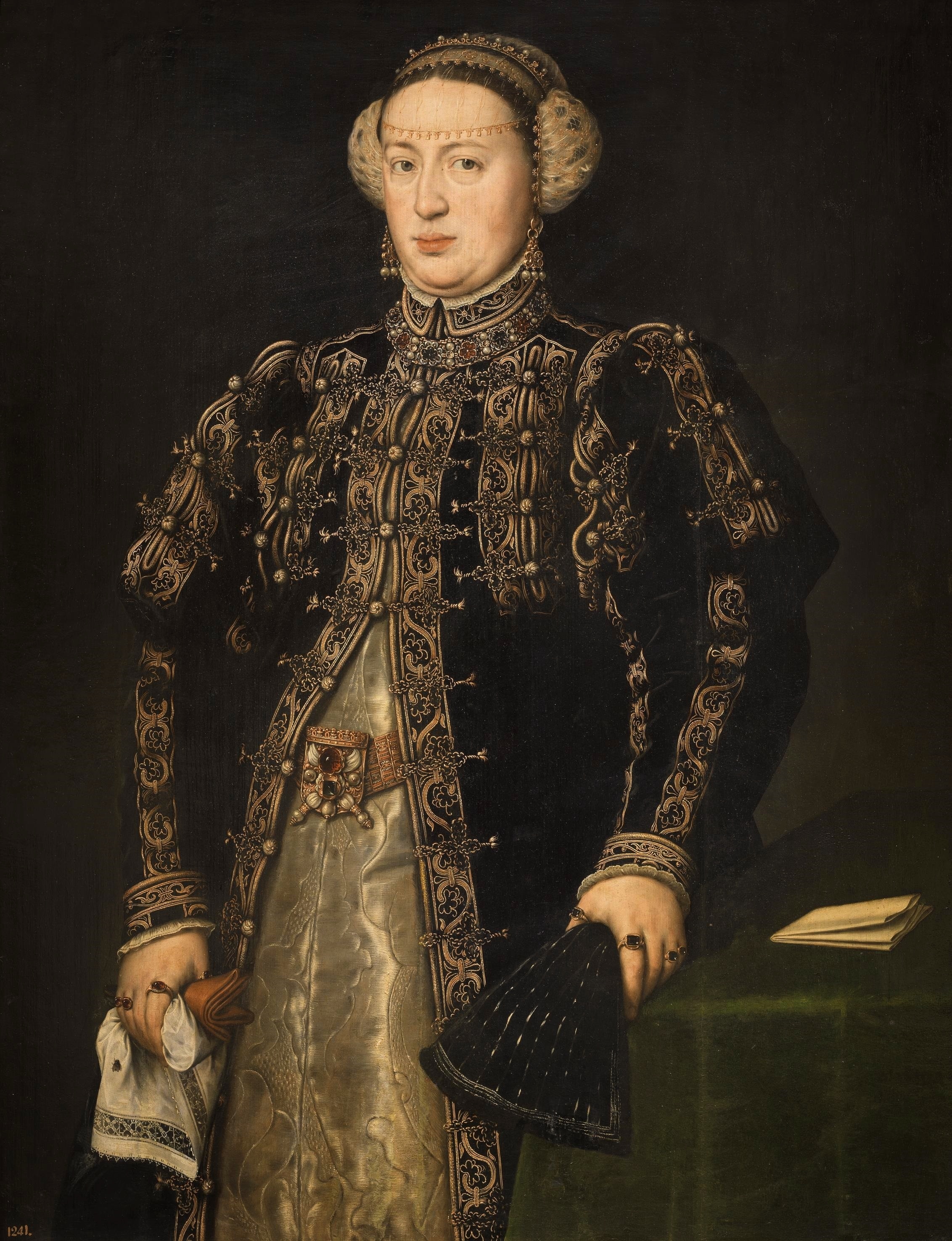
Another war between cross and crescent would take place in Hungary as well, though some would argue that this conflict would be of far more epic proportions regarding its potential consequences. The Ottomans, under Sultan Suleiman I of the Ottoman Empire, soon began to penetrate the Hungarian frontier by June, the 55,000 strong army reached the Danube, with the intent of pillaging the Hungarian countryside. Soon enough, the Hungarian King, Louis I of Hungary, called upon the realm’s nobility to provide troops for the realm’s defense, and after receiving reports from Christian spies within the Ottoman army of the Turks intent, directed the bulk of his forces towards Buda, in an effort to protect Central Hungary from the Turk. Louis also had ample reason to fight, his wife, Mary of Austria, Queen of Hungary, was heavily pregnant, and could not be safely moved should he be defeated. Crucially for the Hungarians, they were also to receive some outside help. Firstly, was a contingent of 8,000 Polish troops, sent by King Sigismund I of Poland(having welcomed the birth of his third child Princess Sophia, three months beforehand), who was tied to Louis as his uncle, as well as through the fact that he was the Queen of Hungary’s brother-in-law through his marriage to Eleanor of Austria. Another source of assistance came from King Louis’s father-in-law, Phillip I, Holy Roman Emperor, who provided 4,000 men to drive off the Turks, partially out of a genuine wish to help his son-in-law and daughter, but also out of the knowledge that the Turks could use Hungary as a springboard to attack Austria, or his second son’s lands in Istria. Another form of assistance was a slightly surprising one, for Duke Massimiliano I of Milan, spurred on by his own piety, and the exhortations of his wife Isabella of Aragon to beat back the infidel(in the mold of her grandmother and namesake) arrived in Hungary at the head of a 3,000 strong army in July. Soon enough, on August 29th, the Hungarians, and their allies, now totaling 45,000 men, with 100 cannons, attacked the exhausted Ottoman army outside the town of Mohács. While he made the decision to attack at this point, a Hungarian knight protested that this was unchivalrous, to which King Louis bitterly laughed,”Did the Turk show chivalry to Belgrade, or all of the towns that they have just pillaged? No, I think it time that they be given the same treatment that they mete out to the innocent.” The battle soon began at mid-morning, and the butchery would not end until the sun had set. The initial charge by the Hungarians, with their cavalry advantage, went swimmingly well, and much of the Ottoman irregular forces, and cavalry was either routed or killed. The battle became significantly more difficult for the Hungarians when they started fighting the Ottoman Janissaries and professional troops, yet with the fervor of men fighting for their kingdom and their god, they fought on. The Hungarian Cavalry, with their Ottoman counterparts now absent, could now play a decisive role in the battle. They, alongside their Polish comrades, concentrated on attacking the Ottoman Artillery, forcing the enemy infantry to pull back to protect the artillery, and in a tighter formation, they were very vulnerable to the Hungarian cannon.; After a volley of artillery, the Hungarians charged upon the remaining Ottomans, whose artillery advantage was now nullified, for their cannon could not fire without hitting their own men, and had to contend with near-constant flank attacks by Hungarian cavalry. Ultimately, the crucial moment of the battle came when Sultan Suleiman collapsed after he was shot in the hip, by an arquebusier, and his men thinking him dead, attempted to flee the field. As the Ottomans attempted to flee, however, many were killed, or captured by the Hungarian Knights, driving the Ottoman death toll even higher, while Sultan Suleiman was captured, though he would recover from his wounds. In spite of the fact that this was a victory for the Hungarians it was a very costly one, an estimated 12,000 Hungarians and their allies were killed, or badly wounded, and even some prominent noblemen died, such as John Zápolya and his younger brother George Zápolya, both shot dead by Janissaries. Ottoman casualties were even worse than those of their enemies, an estimated 20,000 Ottoman troops were killed, and another 10,000(mostly Rumelian levies) were captured. As for their leadership, the Grand Vizier, Ibrahim Pasha was trampled underfoot by a Polish Knight, Malkoçoğlu Balı Bey, killed by a Milanese arquebusier and the Crimean Khan, Devlet I Giray, was badly wounded by Hungarian footmen. Soon after the battle the Treaty of Buda was signed, in which the Sultan was released in return for an annual indemnity equal to 5,000 Akçe a year for ten years, as well as a truce preventing the mutual aggression for ten years. Territoriality, The Ottomans were to give Belgrade, and all lands north of the city to King Louis II. Overall, while this wasn’t exactly a devastating defeat for the Ottomans, it was a humbling one, which would cause Sultan Suleiman “The Magnficient” to focus on the internal stability of his Empire, and in fighting his Persian rivals, the Safavids. On September 7th, upon his return to Hungarian court he found that his wife Mary, had just given birth the day before, to a daughter, who she named Catherine, after St. Catherine of Siena, upon whom she prayed for her husband’s survival and victory. Louis, though a little disappointed that the child was a girl, saw the successful delivery as a good omen for his realm, and showed his wife much gratitude.
Also, in early August, Frederick of Austria, the penultimate child of Phillip I, Holy Roman Emperor, and Juana of Aragon, was wed to Barbara Fugger the daughter of the incredibly wealthy Raymund Fugger, in a marriage intended to repay the Fugger family for funding Phillip’s election as Holy Roam Emperor. While the marriage was simply designed as a way of repaying debts, it soon blossomed into passionate love, for Frederick, like his mother, expressed a nearly excessive devotion to his spouse, and Barbara, unlike her father-in-law, returned that love fully.
In Italy meanwhile, on August 22nd, a glittering marriage took place in Florence, befitting the groom’s wealth, and the bride’s status. The groom was the young Duke Alessandro I of Florence, who was determined to overcome the stain of his bastardry by marrying Louise of Savoy, the youngest of Duke Philibert II of Savoy’s two daughters by Maria of Aragon. The two seemed to like each other well enough, though Louise would later come to regret her expectation that he would be discreet when it came to extramarital affairs, and he would take multiple mistresses throughout their marriage. Still, Louise was determined that she would not be conniving like her mother, and instead of trying to replace her husband’s mistress with pliable women, she simply ignored them. Another show of Louise’s indifference towards the unfaithfulness of powerful men, was the fact that she was accompanied to Milan by her bastard half-sister Agnes of Savoy, who would go on to serve as her chief lady in waiting for several years. In Milan, Louise’s cousin, Isabella of Aragon, Duchess of Milan, and her husband Duke Massimiliano I of Milan welcomed the birth of another child on August 23rd, a boy who they named Giovanni, the Italian variant of her late father’s name. Unfortunately, the sickly child, was born two months early, and would die just two days later, on August 25th. The saddened couple would soon receive some better news, when several days later it was agreed that Sigismund, the Crown Prince of Poland, would be wed to their eldest daughter, Bianca Maria Sforza, shortly after the boy’s sixteenth birthday.
In The Holy Roman Empire, Emperor Phillip I was finally, after months of negotiation, able to meet with the Empire’s many princes at Speyer, on September 3rd, for an imperial diet regarding the spread of Lutheranism, as well as the fate of the man who had heavily criticized the Catholic Church, Martin Luther. Ultimately, in spite of the protests of his son, Charles of Austria and more hardline Catholics Phillip reached a compromise, peaceful Lutherans were to be tolerated in areas ruled by Catholic Princes, while peaceful Catholics were to be tolerated in lands ruled by the Protestant Princes, while Catholicism was to remain the Empire’s official religion, and Church lands could only be taken by being purchased from Rome.
In Sweden, a dispute over the expulsion of Archbishop Gustav Troll, by King Gustav I prompted the beginning of the Swedish Reformation, though h unlike it’s Norwegian Counterpart, the Swedish Church would retain nearly every piece of Catholic Doctrine, except for three main difference. First and foremost was that the King of Sweden was the head of the Swedish Church, and seized half of the Church’s land in Sweden for the crown. Secondly, the bible was to be translated to Swedish and Finnish, the main vernacular languages of Sweden, to prevent priests from manipulating the people into believing things that only benefitted the clergy. Thirdly, while Communion was still a central part of worship, it was stressed that the bread and wine were mere symbols of the blood and body of Christ. This relatively moderate reformation was also done for dynastic reasons, as Gustav scaled back on more radical reforms to keep his betrothal with Princess Hedwig of Poland.
In England, King Henry VIII arranged marriages for his two youngest daughters, Princess Elizabeth, and Princess Edith. Princess Elizabeth was to be betrothed to her second cousin, Philibert of Savoy, the eldest son of Phillip of Savoy and Susanna of Bavaria, who stood to inherit Savoy after his grandfather (the current Duke) and his father. Princess Edith for her part was betrothed to her first cousin once removed, Crown Prince John of Denmark, reaffirming ties between England and Denmark.
Towards the end of the year, a crucial marriage binding the d’Este and Habsburg families soon took place, on December 26th, with Ercole d’Este, the son and heir of Duke Alfonso I of Ferrara being wed to Catherine of Austria, the youngest daughter of the Holy Roman Emperor. Many remarked that the two were remarkable well suited to one another, as they both shared a keen interest in their religious studies, and much like their cousins, the Duke and Duchess of Milan, the two came to love each other through their shared interests.
Teodósio I, Duke of Braganza

Infanta Beatrice, Duchess of Braganza

Sultan Suleiman "The Magnificent" of The Ottoman Empire
Duke Alessandro I of Florence

Louise of Savoy, Duchess of Florence

Agnes of Savoy

Ercole d'Este

Catherine of Austria

Last edited:








